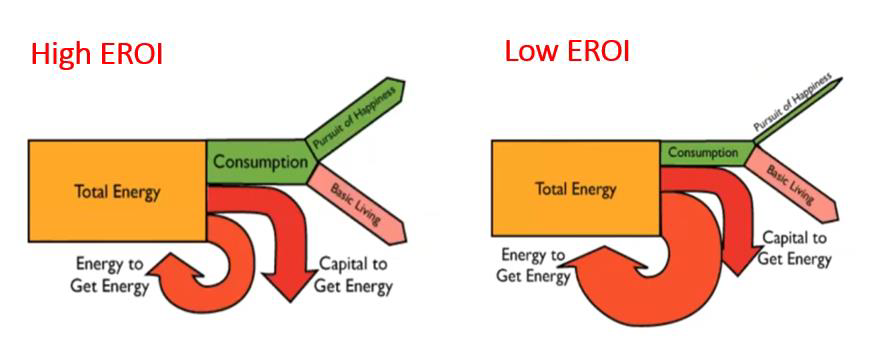High and Low EROI Economy
Revised 2 December 2023
To get energy for consumption requires capital created by energy to get energy plus energy to get energy. Energy Returned over Energy Invested, shortened to EROI or sometime ERoEI is a ratio for describing a measure of the energy produced in relationship to the energy used to create it (Hall 2016).

Figure 1: High and Low EROI Economy
The left-hand side of Figure 1 shows a high EROI economy where the energy surplus available for the pursuit of happiness is of the same scale as that required for basic living. Over a large part of the 20th century, we have enjoyed a high EROI economy. The right-hand side of Figure 1 shows a low EROI economy where the energy surplus available for the pursuit of happiness is much less than that for basic living.
Figure 1 is overly simplistic because the energy consumption for basic living is shown to be the same for both economies. What constitutes basic living is largely in the eye of the beholder when life is well above subsistence level. For example, in some developed nations, a family home of 200 square metres might be considered a normal standard. In New Zealand during the 1970s, the size of a standard 3-bedroom house was 94 square metres. What is frivolous consumption in the pursuit of happiness is also largely in the eye of the beholder.
The balance of surplus energy allocated for basic living and the pursuit of happiness can vary from one economy to another when the total surplus is the same. The level of technology that is possible in any economy is largely determined by surplus energy left over after providing for basic living.